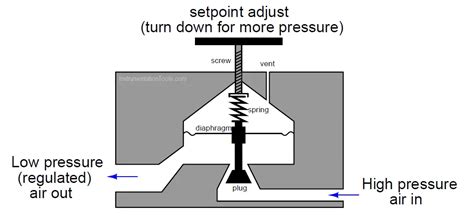Get Perfect Air Pressure with This Easy Regulator Trick
Maintaining the correct air pressure is crucial for various applications, from inflating tires to powering pneumatic tools. However, achieving that perfect pressure can sometimes be a frustratingly imprecise process. This article will reveal a simple yet effective trick to ensure accurate air pressure regulation, saving you time and potentially preventing costly mistakes. We'll delve into the common challenges faced when using air regulators and offer solutions to ensure you consistently achieve the desired pressure.
Why Achieving Precise Air Pressure Matters
Accurate air pressure is paramount for a multitude of reasons. In automotive applications, incorrect tire pressure can lead to reduced fuel efficiency, uneven tire wear, and compromised handling. For pneumatic tools, improper pressure can result in inefficient operation, damage to the tool itself, or even injury to the user. In industrial settings, maintaining precise air pressure is often critical for ensuring the quality and consistency of manufactured products.
Common Challenges with Air Regulators
Many users struggle with the inconsistency of standard air regulators. These challenges often stem from:
- Poor Gauge Accuracy: The gauges themselves might be poorly calibrated or inaccurate, leading to unreliable readings.
- Leakage: Leaks in the regulator or connecting hoses can cause pressure fluctuations and prevent accurate pressure maintenance.
- Friction and Sticking: Internal components of the regulator can become sticky or experience friction, impeding smooth pressure adjustment.
- Improper Installation: Incorrect installation of the regulator can affect its performance and accuracy.
The Easy Regulator Trick: The "Bleed and Set" Method
This simple technique utilizes the bleed valve on most air regulators to achieve pinpoint accuracy. Here's how it works:
- Initial Adjustment: Set the regulator to approximately the desired pressure. Don't worry about being perfectly precise at this stage.
- Bleed the Line: Open the bleed valve to release any pressure from the line connected to the regulator. This removes any residual pressure that might affect the final reading.
- Fine-Tune with the Gauge: Close the bleed valve. Carefully and slowly adjust the regulator until the gauge reads the exact desired pressure. The bleed step ensures that you're starting with a clean slate, leading to a more accurate final pressure.
- Verification: Monitor the pressure for a few minutes to ensure it remains stable. If there are any fluctuations, re-check for leaks in the system.
Troubleshooting Common Regulator Problems
H2: My Air Regulator Gauge is Inaccurate. What Should I Do?
If you suspect your gauge is inaccurate, you'll need to calibrate it against a known accurate gauge or pressure testing device. Alternatively, consider replacing the regulator entirely if the gauge is beyond repair.
H2: My Air Pressure Keeps Fluctuating. What Could Be the Cause?
Fluctuating pressure is often a sign of a leak somewhere in the system. Carefully check all connections, hoses, and the regulator itself for any signs of leakage. Apply soapy water to the connections to help visualize any escaping air.
H2: How Often Should I Calibrate or Replace My Air Regulator?
The frequency of calibration or replacement depends on the usage intensity and the quality of the regulator. Regular maintenance and inspection are key. If you notice significant discrepancies between the regulator's reading and a known accurate gauge, it's time for calibration or replacement.
H2: What Type of Air Regulator is Best for My Needs?
The ideal air regulator depends on the specific application and the required pressure range. Consider factors like pressure range, flow rate, and accuracy requirements when choosing a regulator.
Conclusion
Achieving precise air pressure is essential across a wide range of applications. By employing the simple "bleed and set" method, you can significantly improve the accuracy and consistency of your air pressure regulation, leading to improved efficiency, safety, and overall performance. Remember to regularly maintain and inspect your air regulator and its components to ensure optimal functioning and longevity. With a little attention to detail, maintaining the correct air pressure becomes a straightforward and reliable process.

